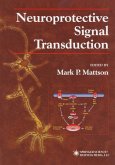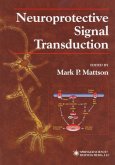Since the pioneering discovery of cyclic AMP four decades ago, a multitude of signaling pathways have been uncovered in which an extracellular signal (first messenger) impacts the cell surface, thereby triggering a cascade that ultimately acts on the cell nucleus. In each cascade the first messenger gives rise to the appearance of a second messenger such as cyclic AMP, cyclic GMP, or diacylglycerol, which in turn triggers a third messenger, a fourth messenger, and so forth. Many advances in elucidating such pathways have been made, including efforts to link messenger molecules to brain processes operative in health or disease. However, the latter type of information, relating signaling pathways to brain function, is scattered across a variety of publication media, which makes it difficult to integrate the multiple roles of different signaling cascades into our understanding of brain function in health and disease. The primary aim of Cerebral Signal Transduction: From First to Fourth Messengers, therefore, is to offer a comprehensive picture of the recent advances made in the signaling field as it relates to neuronal and cere bral function. The current state of progress provides an exciting opportunity for such a comprehensive focus because molecular tools have become available to selectively remove, reduce, or enhance spe cific components in the signaling pathways, e. g. , by interfering with the genes encoding key proteins. In addition, the increased awareness of crosstalk between different signaling cascades has revealed many possibilities for changes in gene expression underlying long-term changes in brain function.
"The editor states the goal is to offer a comprehensive picture of recent advances made in the signaling field as it relates to neuronal and cerebral function. . . The editor and the contributors accomplished the goal remarkably well. The chapters are arranged so that clinical and laboratory investigations on depression, bipolar disorder, and drug dependence follow more basic research on memory, apoptosis, and degeneration. Each chapter is extremely well referenced, making this a valuable reference source. Multiple black-and-white illustrations, drawings, and microphotographs enhance the text quality...This new volume in the series Contemporary Neuroscience may serve as an excellent overview of current knowledge in the field of cerebral signaling and transduction."-Doody's Health Science Book Review Journal
"The quality of each of the chapters of this book is outstanding and will provide valuable information for a variety of neuroscientists."- Journal of Molecular Neuroscience
"The quality of each of the chapters of this book is outstanding and will provide valuable information for a variety of neuroscientists."- Journal of Molecular Neuroscience








